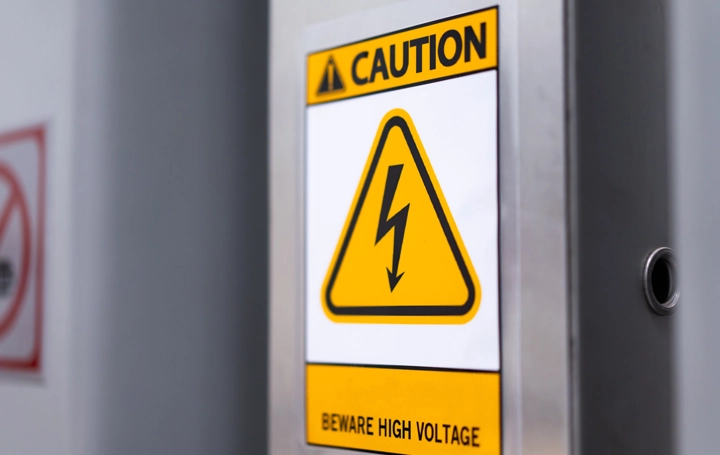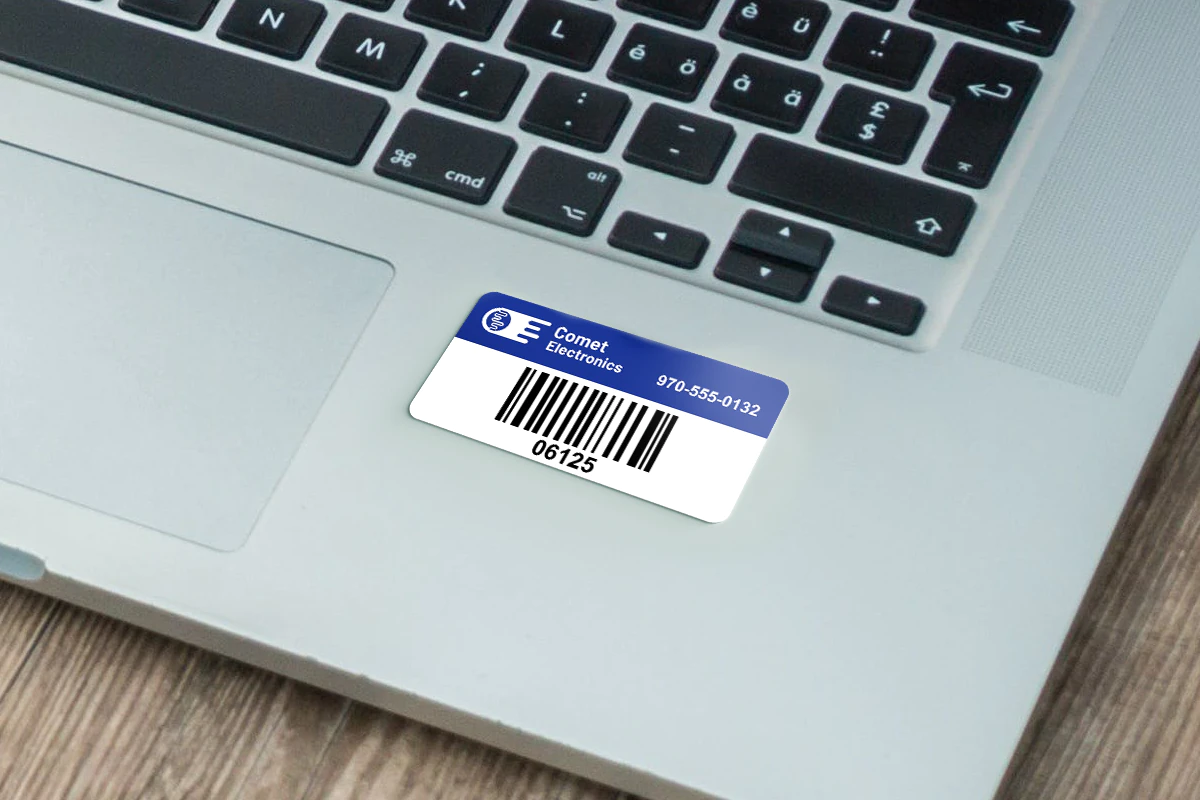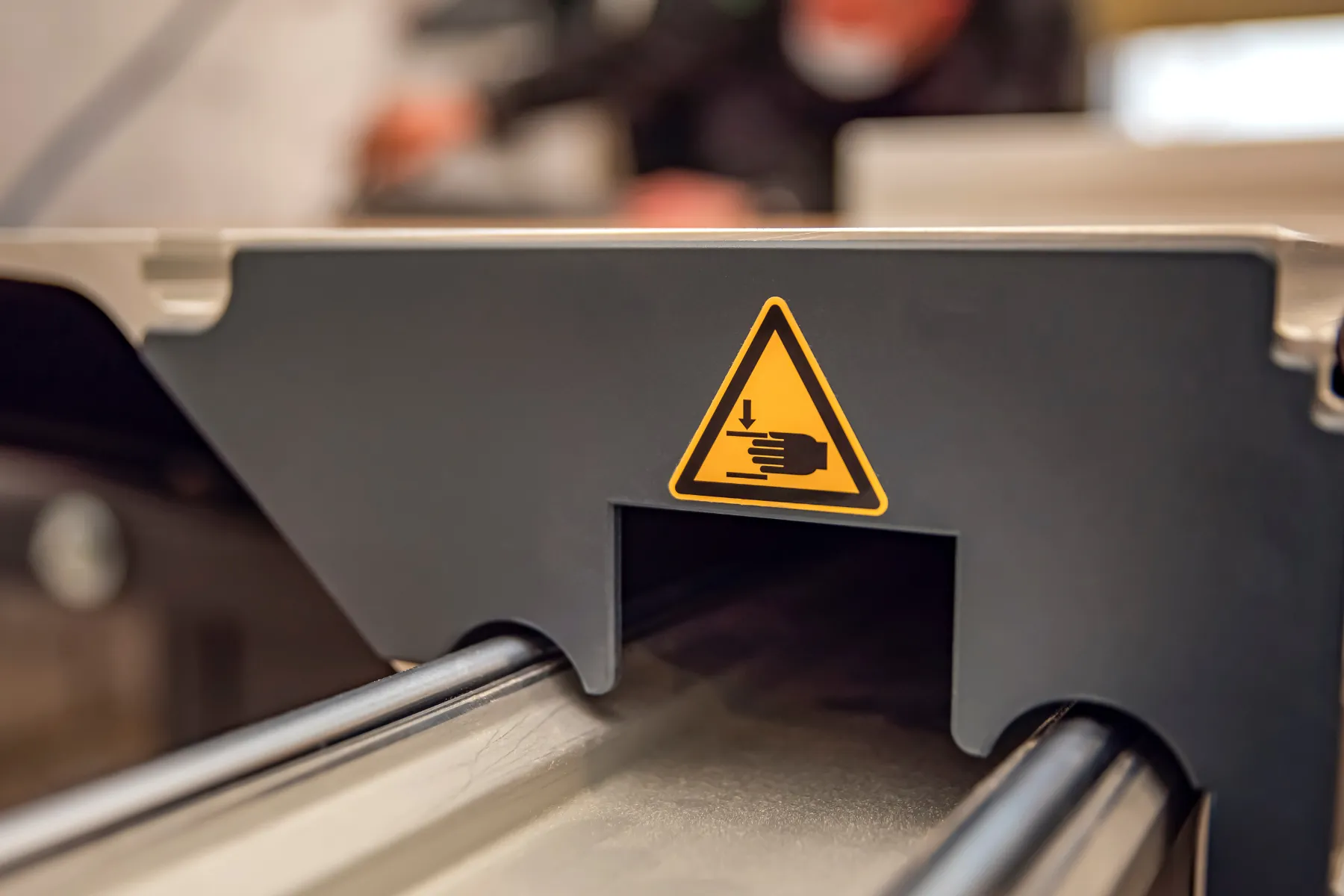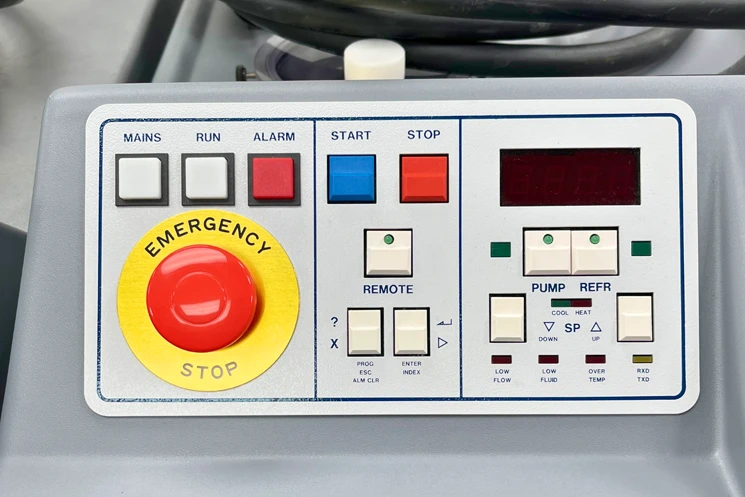If someone pulls the wrong breaker, misroutes a cable, or opens a live panel, it’s almost never because they wanted to. It’s because the label wasn’t clear, missing, or already peeled off. Industrial safety labels solve that before it starts—especially when they’re built for high-heat, arc flash environments.
Built to Withstand the Job Site
Electrical rooms aren’t gentle places. Label materials need to survive heat, abrasion, chemicals, cleaning agents, and time. We recommend:
- Thermal transfer polyester for crisp text and long-term hold
- Overlaminates for abrasion resistance and chemical wipe-downs
- High-tack adhesives that bond to textured or powder-coated panels
These hold strong on load centers, MCCs, switchgear, transformers, and conduit tags.
Label Types That Work Where It Matters
Use the right label type for the application:
| Material | Key Properties | Adhesive Type | Outdoor Durability | Best Uses for Electricians |
|---|---|---|---|---|
| Vinyl – Standard 4 mil (Gloss White) | Economical, durable, conforms to moderately irregular surfaces. | Permanent | 3–5 years | General electrical panels, conduit labeling, durable indoor/outdoor ID. |
| Vinyl – Removable 4 mil | Removes cleanly within 6 months; conforms to moderately irregular surfaces. | Removable | 6 months | Temporary equipment IDs, job-site temp labels, panel upgrades. |
| Vinyl – Premium 2 mil | Thin, high print quality; may stretch; suitable for irregular/corrugated surfaces. | Permanent | 5 years | Detailed safety graphics and branding on smooth or corrugated panels. |
| Vinyl – Elephant Grip 4 mil (White) | Aggressive adhesive for LSE plastics; performs −40°F to 175°F. | Permanent | 2 years | Pelican cases, powder-coated boxes, outdoor electrical housings. |
| Vinyl – Fluorescent 4 mil (Orange/Yellow) | High-visibility colors; OSHA orange option for safety applications. | Permanent | 1 year | Hazard warnings, arc-flash labels, caution markers in dim areas. |
| Vinyl – Reflective 7.5 mil (White) | Highly reflective day & night; strong opacity and durability. | Permanent | 7 years | High-voltage areas, outdoor boxes, truck/equipment safety decals. |
| Vinyl – Destructible Reflective 5 mil (White) | Tamper-resistant (breaks apart when removed); reflective for visibility. | Permanent | 7 years | Asset tags, meter seals, breaker lockout seals needing tamper evidence. |
| Vinyl – Convex 4 mil / 6 mil (Clear/White) | Designed for rounded/convex surfaces; durable and versatile. | Permanent | 2 years | Hard hats, conduit bends, curved switchgear housings. |
| Convex Vinyl – Super High Gloss (Silver Foil) | Mirror-silver finish; conforms to curves; durable and aesthetic. | Permanent | 5 years | Premium branding labels on electrical equipment. |
| Polyester – 1 mil (Clear) | Thin, heat-resistant up to 257°F; high stretch resistance. | Permanent | 2 years | Clear overlays, light switches, protective label covers. |
| Polyester – 2 mil (White/Clear/Silver) | Heat-resistant up to 302°F; best for flat, smooth surfaces. | Permanent | 2 years | Asset tags, rating plates, equipment IDs on flat metal/plastic. |
| Polyester – Elephant Grip 2 mil (Gloss White) | Aggressive adhesive for rough/LSE surfaces; −40°F to 302°F. | Aggressive Permanent | 2 years | Powder-coated housings, rough plastics, permanent safety warnings. |
| Polyester – Security Void 2 mil (Silver) | Tamper-evident; reveals “VOID” on removal; best on smooth, flat surfaces. | Permanent | 2 years | Seals on enclosures, calibration tags, lockout/tagout compliance. |
| Lexan® – Velvet 10 mil | Semi-rigid overlay; subsurface printed for abrasion protection; indoor use. | Apply with laminating adhesive | No (indoor) | Control panel overlays, membrane switchpads, graphic overlays. |
| Lexan® – Matte 10 mil | Semi-rigid overlay; subsurface printed; indoor; matte may show fine scratches. | Apply with laminating adhesive | No (indoor) | Switchpad graphics, equipment overlays where glare reduction helps. |
| PVC Plastic – 10 mil (White) | Semi-rigid; suitable for tags/permits; not for horizontal outdoor exposure. | None (non-PSA) | ~1 year | Door hangers, temporary permits, breaker and service tags. |
What Makes a Label "Compliant"
ANSI and OSHA don’t just care about having labels—they care about whether someone can read and understand them. That means:
- Signal words like WARNING or DANGER must be in the correct colors and size
- Pictograms must be clear and standardized
- Font size must match viewing distance per ANSI Z535 standards
- Label placement must be near the hazard and visible without obstruction
Templates help keep your layout consistent across every panel.
Backed by Industry Standards and Real Safety Data
According to the National Institute for Occupational Safety and Health (NIOSH), clear labeling and visual hazard communication are proven to reduce electrical injuries in industrial settings.
Labels that follow ANSI Z535 formatting improve recognition time and decision-making, especially during high-stress maintenance or emergency work.
Fast Identification = Fewer Mistakes
Panels get opened during emergencies, audits, repairs, and expansion projects. A good labeling system helps techs:
- Verify voltage without guessing
- Confirm lockout/tagout status fast
- Identify circuits before disconnecting
- Trace wiring across large facilities
Color-coded panels and numbered tags add speed and clarity. Use thermal transfer printers for sharp barcodes, QR codes, or serialized IDs.
Don’t Let Labels Be the Weakest Link
Cheap adhesive, low-contrast text, or peeling corners? That’s where accidents start. The right industrial safety labels stay readable in harsh conditions, and stay stuck until you’re ready to remove them.
Labels aren’t just compliance tools—they’re part of your equipment. When they’re printed to spec, made from the right materials, and placed with intent, they become part of your facility’s built-in safety system. Our industrial safety labels are engineered for reliability, legibility, and long-term adhesion in the harshest environments.
And when it comes to front-panel usability, graphic overlays offer the durability and precision layout needed for safe control system operation. Both are built for electrical, manufacturing, and high-demand facility use.
Recap: What Matters Most with Electrical Panel Labels
- Use thermal transfer polyester for lasting durability in heat and industrial environments
- Choose label types that match the job—overlays, self-laminating, or custom die-cuts
- Follow ANSI Z535 and OSHA guidelines for compliant layouts, font sizes, and signal words
- Prioritize legibility, adhesion, and resistance to abrasion, chemicals, and time
- Color-coded and serialized labels reduce guesswork during emergencies and maintenance
The right labels aren’t just a requirement—they’re a way to prevent costly, dangerous mistakes before they happen.
Electrical Panel Labels FAQ
Polyester with thermal transfer print is the top choice for durability, legibility, and resistance to heat and chemicals.
Yes. Use a thermal transfer printer with UL-recognized ribbon and label stock to meet compliance.
Yes. OSHA requires hazard labeling in accordance with ANSI Z535 standards, especially for arc flash, voltage, and disconnect warnings.
Safety labels are typically warning or ID stickers. Graphic overlays are durable faceplates or panels with printed legends, often used on control systems.
Use proper signal words, format layouts with header/body structure, include pictograms when possible, and size text appropriately based on viewing distance.
Yes. Color-coding by voltage, function, or hazard type can improve clarity and reduce time spent tracing circuits.
High-tack acrylic adhesives perform best on textured or powder-coated surfaces, especially in heat or humidity.



